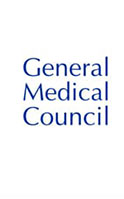Semen Analysis
Semen analysis is a test performed as part of the male reproductive health assessment. It involves measuring the sperm count through a sample of semen to help determine a man’s fertility and sexual function. Your fertility specialist tests your semen sample to study the morphology and motility of your sperm. Semen analysis provides information about the quantity and quality of sperm.
Indications: When is a Semen Analysis Recommended?
Your doctor may order a semen analysis/ sperm count if your partner is unable to conceive despite 1 year of unprotected intercourse.
Preparation for Semen Analysis
You should follow the instructions given by your doctor with regards to your diet and medications. To get optimum results, you should avoid masturbation or sex for two to seven days before the sample is collected.
How is the Semen Sample Collected?
If you visit a clinic or a hospital, you will be asked to masturbate in a private room and collect your semen sample in a sterile container. The semen sample is usually examined within one hour after ejaculation.
Sperm are very temperature sensitive. So, if you collect your semen at home, the sample should be carried close to your body during transportation.
Do not refrigerate, heat or leave the specimen at room temperature. Deliver the sample to the lab within one hour for analysis.
What Happens During a Semen Analysis?
Your fertility specialist tests your semen sample to determine the quality of your sperm and assess whether your sperm count is normal or not. Semen analysis involves testing your semen sample at two levels:
Macroscopic analysis: To test your semen for-
- Colour
- Volume
- Viscosity (thickness or thinness)
- pH
- Liquefaction time: Time taken for your semen sample to convert from thick to water-like consistency
Microscopic analysis: To test the sperm in your semen sample for-
- Motility: to check how the sperms move
- Concentration: total number of sperm in the whole ejaculate, usually number of sperms per ml
- Morphology: to see the shape and size of your sperm under high magnification
- Vitality: to check whether the sperm are dead or alive
What are the Results from the Semen Analysis?
Men may have a normal sperm count, or they may be diagnosed with various conditions such as:
- Azoospermia: no sperms in the semen sample
- Oligozoospermia: low sperm count, where a man has fewer than 15 million sperm per millilitre of semen
- Presence of specks of blood in the semen
What are the Causes for Low Sperm Count/Oligozoospermia?
Possible reasons for a low sperm count may include:
- Obesity/being overweight
- Hormone imbalance
- Genetic problem
- Undescended testicles as a baby
- Damage to the reproductive system
- Varicoceles (enlarged veins in the testicles)
- Genital infection
- Previous surgery to the testicles or hernia repairs
- Excessive alcohol consumption
- Use of cocaine or marijuana
- Certain medications
How is Low Sperm Count/Oligozoospermia Treated?
You should maintain a healthy weight, exercise regularly, avoid excessive alcohol and stop smoking. Increase the frequency of unprotected sexual intercourse to every 2 or 3 days. Your doctor may give you certain hormonal medications to improve your sperm count.
If your partner is unable to conceive despite the above methods, then you may try artificial insemination. This includes In vitro fertilization (IVF), Intracytoplasmic sperm injection (ICSI) and donor insemination.
To learn more about semen analysis, sperm count, and treatments for low sperm count, visit your fertility specialist today.







